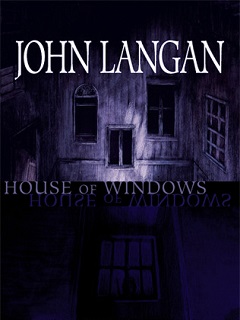If you like a spooky story woven through with themes of fatherhood, references to Charles Dickens, and the occasional eruption of Hellraiser-like aesthetics, then House of Windows is the novel for you. John Langan is one of my favorite authors, and I was delighted to get a copy of his first book, House of Windows, from my wife for Christmas. This novel did not disappoint my high expectations.
Spoilers Below
Much like Langan’s other work, House of Windows contains a kind of Russian Nesting Doll narrative. On the top level, there is Veronica telling a horror writer the story of how her husband disappeared. The level below that is Veronica’s tale itself, and within that level, there are several digressions into other sub-levels. Some of these sub-levels are about Belvedere House, the spooky home that plays a major part of the tale, and others are backstory related to Veronica or her husband’s history. Each piece fits perfectly into the tapestry of House of Windows.
 While House of Windows seems like a haunted house story at first glance, it’s actually more of a haunted father story. The novel’s primary conflict stems from a curse that Veronica’s husband, Roger, places on his son, Ted. Roger places the curse on Ted after the two get into a physical fight over the fact that Roger left Ted’s mother to marry Veronica, his college student. Due to Ted’s death soon after the curse, Roger is unable to reconcile with his son, and Veronica is soon haunted by visions and reminders of Ted, figuratively and literally. Ted’s death breaks Roger, and to try to be closer to his lost son, Roger decides to move him and Veronica into the home where he raised Ted, Belvedere House. Once in Belvedere House, Roger becomes increasingly obsessed with his lost son’s death, and Ted’s haunting of Veronica gets progressively more intense until the novel’s climax, where Roger disappears during a supernatural event. There’s a lot I’m leaving out, but that’s the bare-bones summary of the book.
While House of Windows seems like a haunted house story at first glance, it’s actually more of a haunted father story. The novel’s primary conflict stems from a curse that Veronica’s husband, Roger, places on his son, Ted. Roger places the curse on Ted after the two get into a physical fight over the fact that Roger left Ted’s mother to marry Veronica, his college student. Due to Ted’s death soon after the curse, Roger is unable to reconcile with his son, and Veronica is soon haunted by visions and reminders of Ted, figuratively and literally. Ted’s death breaks Roger, and to try to be closer to his lost son, Roger decides to move him and Veronica into the home where he raised Ted, Belvedere House. Once in Belvedere House, Roger becomes increasingly obsessed with his lost son’s death, and Ted’s haunting of Veronica gets progressively more intense until the novel’s climax, where Roger disappears during a supernatural event. There’s a lot I’m leaving out, but that’s the bare-bones summary of the book.
Having just completed my own house hunt, and thinking an awful lot about fatherhood these days, made House of Windows the perfect novel for me to read this month. I was enthralled by the history of Belvedere House, which is implied to have contributed to and empowered Ted’s haunting, and I was attuned to the cycles of trauma Langan illustrated with Roger and Ted’s relationship. I was also fascinated by Langan’s craft choices in House of Windows. Most of the novel is told in two long sections without chapter breaks. This is done to reflect Veronica telling her tale in long narrations over the course of two nights. I thought this was a clever choice, and I found myself turning the pages quicker because of the lack of interruption.
House of Windows is an excellent read, with a ton of moments that will please horror genre fans as well as insights into the human condition that will please literary genre fans. Langan excels at balancing these two group’s expectations in his work. While I felt that his second novel, The Fisherman, leaned more toward the horror side of the genre seesaw, House of Windows leans a little more to the literary side. Regardless of which side of the genre seesaw you prefer to sit on, House of Windows is worth your time.
P.S.
If you like John Langan’s work as much as I do, you might be interested in checking out my reviews of The Fisherman, The Wide Carnivorous Sky, or Sefira.









